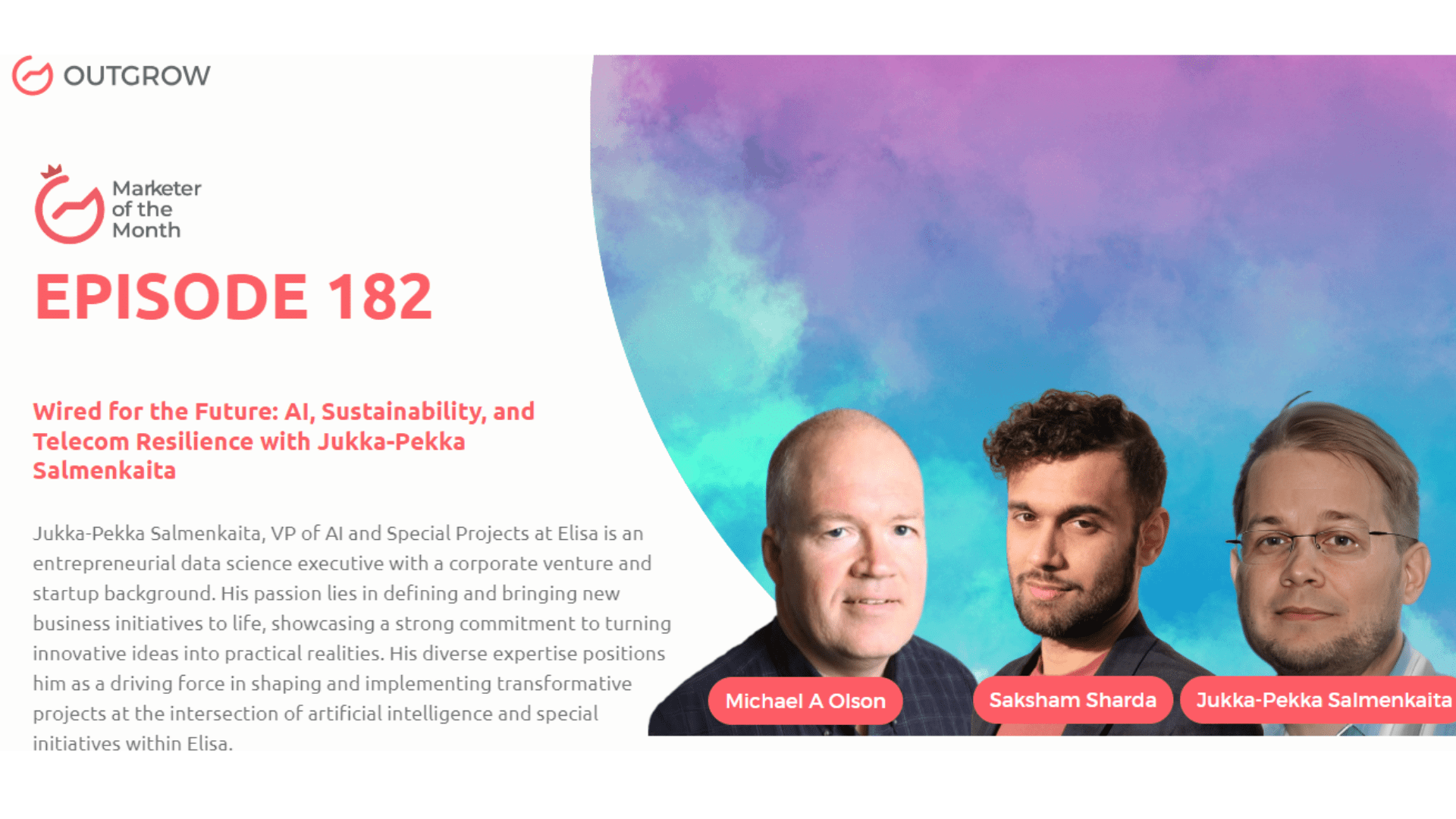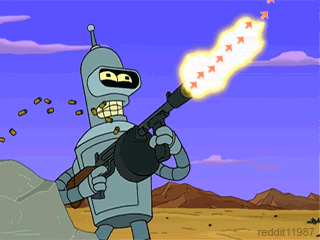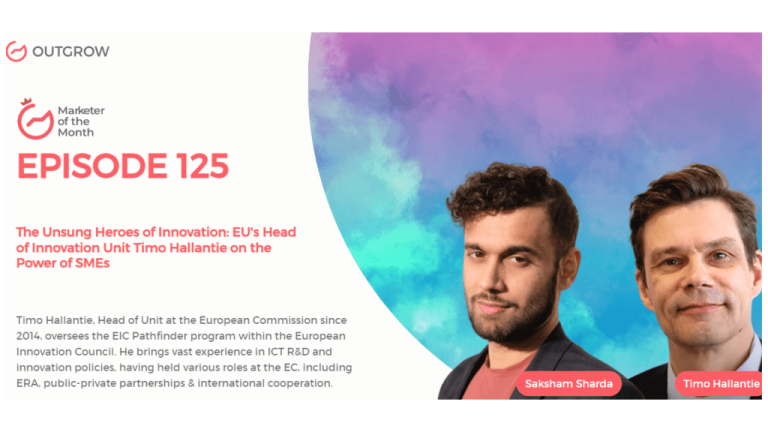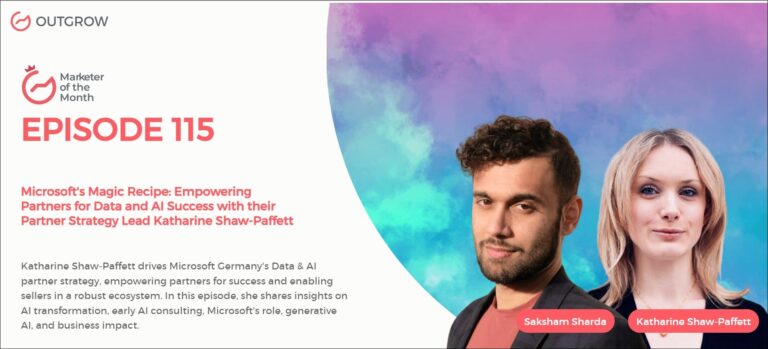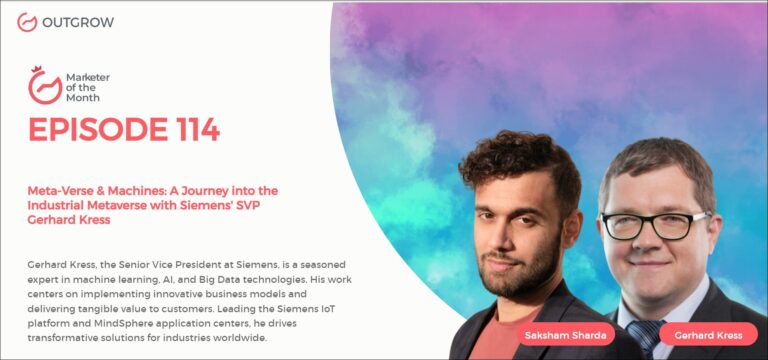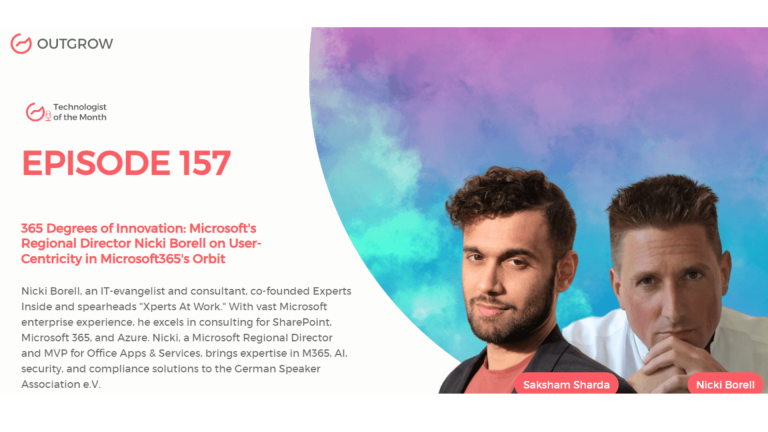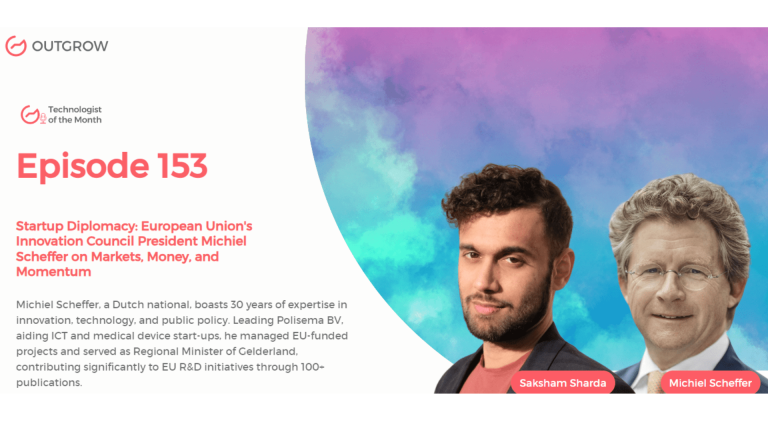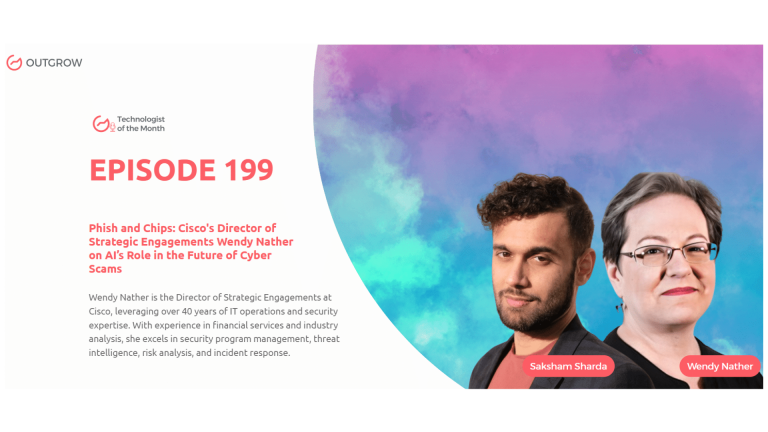EPISODE 182: Marketer of the Month Podcast with Jukka-Pekka Salmenkaita
Table of Contents
Hey there! Welcome to the Marketer Of The Month blog!
We recently interviewed Jukka-Pekka Salmenkaita for our monthly podcast – ‘Marketer of the Month’! We had some amazing insightful conversations with Jukka and here’s what we discussed about-
1. Elisa provides software solutions for various industries globally.
2. Polystar’s telco data platform extracts data for intelligent operations in telecom networks.
3. Sustainable practices focus on upgrading energy purchasing policies and minimizing consumption.
4. Prioritizes both control capabilities and physical hardware backup to ensure network stability.
5. AI plays a crucial role in future technologies, enabling better solutions on top of reliable connectivity.
6. Government funding accelerates market experiments and supports innovative solutions at early stages.
About our host:
Dr. Saksham Sharda is the Chief Information Officer at Outgrow.co. He specializes in data collection, analysis, filtering, and transfer by means of widgets and applets. Interactive, cultural, and trending widgets designed by him have been featured on TrendHunter, Alibaba, ProductHunt, New York Marketing Association, FactoryBerlin, Digimarcon Silicon Valley, and at The European Affiliate Summit.
About our guest:
Jukka-Pekka Salmenkaita, VP of AI and Special Projects at Elisa is an entrepreneurial data science executive with a corporate venture and startup background. His passion lies in defining and bringing new business initiatives to life, showcasing a strong commitment to turning innovative ideas into practical realities. His diverse expertise positions him as a driving force in shaping and implementing transformative projects at the intersection of artificial intelligence and special initiatives within Elisa.
Wired for the Future: AI, Sustainability, and Telecom Resilience with Jukka-Pekka Salmenkaita
The Intro!
Saksham Sharda: Hi, everyone. Welcome to another episode of Outgrow’s Marketer of the Month. I’m your host, Dr. Saksham Sharda, and I’m the creative director at Outgrow. co. And for this month we are going to interview Jukka-Pekka Salmenkaita, who is the VP, AI and Special Projects, Elisa.
Jukka-Pekka Salmenkaita: Great to be here. Thank you.
Don’t have time to read? No problem, just watch the Podcast!
Or you can just listen to it on Spotify!
The Rapid Fire Round!
Saksham Sharda: Okay, so let’s start with the rapid-fire round. The first question is at what age do you want to retire?
Jukka-Pekka Salmenkaita: 65.
Saksham Sharda: How long does it take you to get ready in the mornings?
Jukka-Pekka Salmenkaita: Depending on the definition, a Friday is one hour.
Saksham Sharda: Most embarrassing moment of your life.
Jukka-Pekka Salmenkaita: Pass.
Saksham Sharda: Favorite color?
Jukka-Pekka Salmenkaita: Light Blue.
Saksham Sharda: What time of day are you most inspired?
Jukka-Pekka Salmenkaita: Early mornings or late evenings.
Saksham Sharda: How many hours of sleep can you survive on?
Jukka-Pekka Salmenkaita: Long term 6.
Saksham Sharda: Fill in the blank. An upcoming technology trend is _____.
Jukka-Pekka Salmenkaita: Pass.
Saksham Sharda: The city in which the best kiss of your life happened.
Jukka-Pekka Salmenkaita: Helsinki.
Saksham Sharda: Pick one Mark Zuckerberg or Elon Musk
Jukka-Pekka Salmenkaita: Tough one. Zuckerberg.
Saksham Sharda: The biggest mistake of your career.
Jukka-Pekka Salmenkaita: Pass.
Saksham Sharda: How do you relax?
Jukka-Pekka Salmenkaita: Reading.
Saksham Sharda: How many cups of coffee do you drink per day?
Jukka-Pekka Salmenkaita: One.
Saksham Sharda: A habit of yours that you hate.
Jukka-Pekka Salmenkaita: Pass.
Saksham Sharda: The most valuable skill you’ve learned in life.
Jukka-Pekka Salmenkaita: Push for new things.
Saksham Sharda: Your favorite Netflix show.
Jukka-Pekka Salmenkaita: Witcher.
Saksham Sharda: One-word description of your leadership style.
Jukka-Pekka Salmenkaita: Empowering.
Saksham Sharda: Top priority in your daily schedule.
Jukka-Pekka Salmenkaita: Get stuff done.
Saksham Sharda: Ideal vacation spot.
Jukka-Pekka Salmenkaita: Probably tropical with excellent dining.
Saksham Sharda: Key factor for maintaining work-life balance.
Jukka-Pekka Salmenkaita: Dividing of time slots.
Saksham Sharda: Memorable career milestone.
Jukka-Pekka Salmenkaita: Product launches.
Saksham Sharda: The last song you’ve been listening to?
Jukka-Pekka Salmenkaita: Pass.
Saksham Sharda: The last movie that you saw that had a good impression on you?
Jukka-Pekka Salmenkaita: Not a good impression but it was notre DOM something by this new alright.
The Big Questions!
Saksham Sharda: Okay, so that was the end of the rapid-fire. Now Michael will go on with the longer questions.
Michael Olsen: We’re very glad to welcome you to pick a sermon title as vice president of AI and special projects at Lisa International Digital Services. A company that may not be familiar to many observers or the presumably familiar in Finland and Estonia. Let me start with that well, people might remember a month ago the submarine cable in the Gulf of Finland encountered problems. People thought it might have been cut by some interfering power there but it turned out to be okay. I understand that suffering capables the Elisa cable is that right? It was and things were okay there was minimal or no damage.
Jukka-Pekka Salmenkaita: Welfare was damaged for network operations. There were no problems.
Michael Olsen: There was damage sort of like an amateurish attempt to try to do something. But it is true is it not? You know your operations are mainly centered in Finland and Estonia but with other locations around the world. What are your activities outside that main core?
Jukka-Pekka Salmenkaita: Yeah, so this international update now sir business we are building up, let’s say software solutions for different kinds of operational purposes. Our target section with Elisa industry manufacturing industries, we are, for example, doing quality control systems for semiconductor manufacturing, and then we have Elisa Polystone which is perhaps a bit easier to guess from a telecom background. So in that area, we are doing service assurance and network optimization solutions for other operators. And then we entered in data where we are doing distributed storage sources to help that zero-carbon energy transition happen more smoothly.
Michael Olsen: That’s right, I noticed that you’re divided secondary into the two main sectors that you mentioned there polystar, mostly Telecom, telecom products, and the so-called IT industry, which is I understand industrial software, those are your two main divisions correctly, or was there a third one energy one that you just mentioned?
Jukka-Pekka Salmenkaita: Yeah, that’s to say, less. So please, smaller than these two, but they sent the same portfolio.
Michael Olsen: Okay. So again, telecom software, and industry software that an energy company grouped under one label, Elisa, are very different sorts of enterprises, and what sort of synergy is there between the three?
Jukka-Pekka Salmenkaita: So if we, I am fully accurate that let’s say the customers like what kind of systems they are operating and for what purposes like totally different, but if we look at it from the let’s say, software and how the data is flowing, the face are surprisingly similar. So all our handling very large scale, time series event series data that is coming from 10s or hundreds or 1000s or lots amount of data points, they need to like to figure out based on that very large volume of data, how the operational system could prefer to optimized how to solve our different kinds of problems, be it like navigation in the manufacturing quality or navigation in network service quality or deviation to market balancing service control system, while He then saw once all like from that perspective, like data handling, and thinking like the good handle of the data, making sense of that, and then doing the solos, as the telecom operators of those systems, do better decisions faster, more automated, like that is more or less like that concept is same across as very different customer industries.
Michael Olsen: Okay, so there are those similarities, but one could speculate that, theoretically, at least one of these divisions could be sort of spun off as its own company on a stock exchange or something wouldn’t be possible. And it’s probably not what you’re thinking about right now. But the structure seems set up for that sort of thing.
Jukka-Pekka Salmenkaita: Well, we are more on the acquiring side. But in principle structure is such
Michael Olsen: Understand like, well, zooming in particular to polystar to your telecom products, there is a so-called telco data platform, which is among the sort of it’s among yours, your leading products. Could you describe what that’s all about the telco data platform?
Jukka-Pekka Salmenkaita: Yeah. So like, probably Sonali. telecom operators have like, more or less taken from certain windows or sets of Windows, the technologies and as the operators like, want to fine-tune the operations and make them like more and more smarter. And towards the goal of having self-driving networks. It’s like, from our perspective, we’re imperative that you take the data away from the source system so that you can build up the intelligence operations around that system and the telco data platform is, in a way, the first step for that. However, you can pull in the data across the different windows and the different elements of the source. And then you have like the baseline for which you can start to build up that organization and more intelligent operations.
Michael Olsen: Okay, because our research indicated that this is supposed to be particularly strong when it comes to expanding or scalability as firms grow. How does that work? How is scalability particularly impressed by the features of this platform?
Jukka-Pekka Salmenkaita: Well, telcos tend to be on a pretty large scale already. But of course, like with those that are operating in many domains, some cases create many national companies that there is more like this, like how uniform they make the mediators between the different nation a lot better so so it’s, like always in lots of very large scale bapa sometimes there is more attention of making it more uniform across different regions.
Michael Olsen: Okay, and you know what, what sort of data analytics are provided to the customer as part of this platform?
Jukka-Pekka Salmenkaita: Well, we have both, let’s say baseline capabilities, like portals, ready-made applications for things like performance management, network operating center operations, handling, and so on. So there are those kinds of things. And then, In addition, it’s possible to build new views and build new capabilities. So it’s like both pre-packets and then more like customized alternatives as well. And this customization might be happening with us or it might be happening with customers’ people or some third parties as well.
Michael Olsen: What I hear then is mostly prepackaged, maybe tools or pieces, that the customer can configure the way that he likes, presumably with some good information and training initially from the Elisa side.
Jukka-Pekka Salmenkaita: In a way, like some pre-pack capabilities to start this in with.
Michael Olsen: Okay, and then they take it from there according to their imagination, how they want to put together and build those tools. Well, going to your background, very interesting background before you ever showed up at Elisa, I understand, founded two startups on your own. What were those all about?
Jukka-Pekka Salmenkaita: We were doing recommendation systems for the media industry unwell for telecom operations as well as recommendation systems.
Michael Olsen: I understand the telecom industry.
Jukka-Pekka Salmenkaita: Well for the media industry, but like it was related to the telecom Saas as well. One telecoms and media ever no one interlinked. So collaborative filtering and that kind of.
Michael Olsen: Recommendation on a business level. So helping business leaders make decisions, better decisions.
Jukka-Pekka Salmenkaita: That was more on the business-to-consumer side. So we were building up the recommendation engines for consumer services as well.
Michael Olsen: Okay. Also, we saw on your CV the head of the connected home, was a project within Elisa, while you were there.
Jukka-Pekka Salmenkaita: No, no, that was the Nokia year. So that was the time of the, let’s say, the early rise of smartphones and building up the ecosystem for smartphones to interact with TVs, stereo systems, and so on. So like that was eight years ago, then, it was new nowadays, it’s taken for granted since it is like, widely deployed pretty much with every pie and music system. And it’s on every TV system.
Michael Olsen: Okay, but that was the title of yours within the Elisa corporate structure. Was this another one of your startup efforts?
Jukka-Pekka Salmenkaita: No, that was on Nokia.
Michael Olsen: Now, I understand. One thing I also saw was that Ellisa has won a Finnish award for the sustainable brand index winner back for the third year or maybe a fourth year in a row reflecting your efforts in sustainability. And could you go into that? So what do you do with sustainability that makes you such an outstanding company to pick up these awards?
Jukka-Pekka Salmenkaita: Well, I think that I like many many different angles here, but I focus on the energy side because that is a very big part of life, where the carbon dioxide side is coming. So fundamentally what telecom operators are doing is they are spending energy to transfer information that’s like a pretty boring physical explanation about what operators are doing. But then like what needs to be done in that area, like the things that we did several years ago, ways to upgrade the energy purchasing policy so that you are having renewable sources in the purchasing and you can have like the guarantees of origin and so on for crap. But then you should also minimize the consumption After NFC doing all the capabilities of the heart worse but on the radio network side and further optimizing that so that we have been knowing for quite many years both like together with the Windows Runtime some extra optimization on top of that on our own cutting down energy. Yep, like making sure that the DSU is done, it’s also important to upgrade the new technologies and arrays on both the fixed side and then on the mobile side since then at FSANZ with optical a significantly better than with copper and with the five TT is significantly better than 4T let alone 3T so like important to like keep the pace and like shut down the old technologies as early as possible to like have that gone Samsung, and then we have like, those are all things that we have been doing for quite some time already. And then on the energy side, we are now going like even further we have upgraded our base station infrastructure. So that’s the part that is consuming the largest part of operator energy consumption. So we have upgraded that so that we have extra batteries in and we have our control system that second by second for every base station, we can select whether they are consuming energy from the electricity grid, or the batteries or whether they are taking in extra energy in from the Create for not only for the run equipment but for the batteries as well. And this flexibility capacity we are using for two different economic purposes. Firstly, we can add the timing of the incoming energy. So typically taking more in during night hours less in on the energy to create peak hours. And this is an excellent thing for the environment as well because it’s the peak hours when more for sale generation is required. And there is a risk of let’s say, It’s better with wind products that you might have like peak wind products and the times when the energy system is not requiring it. So from that perspective, this flexibility to like from the consumption side, follow when the products are plentiful, all at zero carbon products, and explain difficulties at the system level is an important thing. And now we can do that for our consumption or the largest part of the consumption that is coming from the mobile network side. And then the second part of the economic thing is that we are also bundling this flexibility capacity or service for energy stabilization. And so with Fini crit in Finland, we are providing the services from telecom infrastructure, how we are balancing the National Electric electricity grid. And that the Nordic model is very black-market market operated. We were the first one in the so-called automatic frequency restoration reserve market with a distribution solution last year.
Michael Olsen: It even sounds like saving energy as a service type offering.
Jukka-Pekka Salmenkaita: In a way. And it’s not only the saving energy, but it’s also the timing of the consumption. It’s good that society is consuming energy if it means that we are consuming less fossil fuels of different kinds, but the timing of that consumption needs to be like matching the intensity of our products, and for that, new intelligence needs to be done. And we have been piloting that in our infrastructure and rather large scale.
Michael Olsen: So you mentioned how timing is so important that that might complicate things a bit. Would you venture, any sort of percentage trigger in terms of what percentage of your energy use is renewable? Is that even possible?
Jukka-Pekka Salmenkaita: From a purchasing perspective, it’s 100%. and has been for quite some time but that is with the guarantee of origins. And now with this system, we can also add you saw that like real Oh by our consumption is like mad seeing the inexpensive times when the worry Apple products and so we intend Finland is high.
Michael Olsen: Right now I want it so Finland is advanced enough in terms of having the renewable energy available for you to plug into both solar and wind.
Jukka-Pekka Salmenkaita: Wind is a well solar is increasing as well, but we are pretty far north especially during the wintertime, unlike solar has its limitation when the sun is not shining. But wind production has been picking up nicely. We have several 1000s of megawatt hours of new wind production capacity in the country from the last two years. So that is a positive development.
Michael Olsen: And I haven’t heard of wind farms out in the Baltics, either these are mostly on land with wind farms.
Jukka-Pekka Salmenkaita: The great majority right now is like in the land areas and like offshore wind production that’s like, in pilot states, is it? It will be coming, but it will, like the onshore Is there, like where the great majority of the new wind farms are coming online?
Michael Olsen: Well, shifting to another important subject with your digital services, again, along the potty Star Line, or maybe also in this industry? The question of course, if cybersecurity ensures your customers are not hacked, you know, what are your measures to assure them on that score to to maintain the security on the networks that you control?
Jukka-Pekka Salmenkaita: That’s an excellent topic, we don’t have that as a, let’s say, separate product line or anything like that, it is more like in all the service areas and all the sources areas where we are working, it tends to be like critical infrastructure at the national level. And from that perspective, like giving our heavy, that’s not like we are coming from operating the critical infrastructure, because we want to bring those same best practices and even improve those when we are working with the customers. But it’s not like a separate business, it’s more so that it’s a super important aspect of pretty much all three in the manufacturing industry. They have very high-security concerns, and the operators are likely well-known that the base needs some critical infrastructure. And then on the energy, we are in a way at the intersection of the nascent electrical energy infrastructure, and national critical telecom infrastructure. So security is well key. Right?
Michael Olsen: Right. And related to that, although different, I think, is the question of stability, making sure that your network just simply doesn’t go down at all. And you know, how do you build that in this must be a similar approach that what you just described in terms of not a special thing, but built into every aspect of your operations?
Jukka-Pekka Salmenkaita: Yeah, of course, it’s also related to the physical items so for example, if we discuss this. Radio network analysis Radio network is also used for government services like border caught barley is fire precautional kind of things. And in that area, if for example, there’s a big winter storm that is like breaking out of electricity, great distribution in but in large parts of the country, well at the mall by connectivity, assess and sell to coordinate the corrective actions. So, in a way, if the mobile part is shut down, it will correct the electricity grid so much harder to coordinate and probably quite a lot slower as well. From that perspective, we do pay a lot of attention both to the control capabilities and also to the physical hardware that we have for backup purposes. But of course, this is only one example. But that is key for mobile infrastructure. Other parts of resilience can need to be like that in different other areas.
Michael Olsen: precisely especially for public customers’ security, that sort of thing you have an especially important role for stability. What is the extent of your public sector contracts in Finland, Australia, or even beyond, what part does that make, and what fraction of your business is for public instances like that?
Jukka-Pekka Salmenkaita: Let’s skip this because this is like more foreign telecom operations on that side, it is very big, and so on. But for the ideas part not so this is kind of from an ideas perspective, a bit like sidetrack, or let’s say they are like on the laser polystars if they are like aspects, but let’s get this is a bit like,
Michael Olsen: Okay, well, again, you’re vice president of AI in special projects. And you’re especially the person to ask to look into the future about the new technologies coming down online. From it of course, 5.5G or advanced 5G or too well, to the telco take-up of innovation and artificial intelligence itself, what does the future look like to you as the Special Projects VP within the company?
Jukka-Pekka Salmenkaita: Well, from the AI perspective, I think we have even more opportunities around now than we ever had earlier. And it was not like boring times even earlier. Now. It’s getting even more exciting, but I think it’s Like a slight difference that from a communication perspective that is in a way a bit like subtle writing like what five t can deliver starts to be like sufficient or what like optical fiber can deliver that starts to be sufficient for a great majority of things. But then like when you can take excellent connectivity as granted, then you can start to build up better, are you like on top of that, and I think this is like a big shift that it is important that not only there will be interconnectivity connectivity items on how that can be further enhanced, enhanced from the fifth generation to the sixth generation, but also the like, look the right way, what is like the total like solos and possibilities and then in those areas, AI is typically a key enabler.
Michael Olsen: Okay, so it sounds like that. You’re getting enough even with 5g, you’re not so much in a hurry to introduce the so-called advanced 5G Or 5.5G coming down the line?
Jukka-Pekka Salmenkaita: Well, we are pushing for the envelope in that area. But I don’t think that that’s the bottleneck for most things like the bottlenecks are elsewhere. From that perspective, it’s really important to look at the whole technology stack, what is required for the solution is not to focus on that connected delay only.
Michael Olsen: And in the branding up to, to finish in Estonian telecoms in general, because of course, you have competitors there is the sector in general, very receptive towards the, towards taking advantage of new technological possibilities.
Jukka-Pekka Salmenkaita: I would say well, as there’s also evidence in these markets that all three have been very active in many fronts of digitalization.
Michael Olsen: Are you talking to the three components of the company?
Jukka-Pekka Salmenkaita: All three, like if you’re speaking about operators in that area? Yeah. So, all operators are heavily engaged with customers on different parts of how to make the digitalization small term, of course, like different emphasis with the different operations, this is good for the competition. But all in all, I think like that, operators are well received to be more proud digitalization partners than the connectivity layer.
Michael Olsen: Okay. And you know, the government gets a say in this. What’s your attitude towards the support offered by the two national governments or maybe even the EU in encouraging and supporting maybe even financially this technology?
Jukka-Pekka Salmenkaita: Well, I think they’re like a few items. Certainly, if I am a bit like all were emphasized to enter society, and there’s like, so urgent need for planets items. First, the government needs to make sure that the field is open for competition. They say it’s like legislating, and it’s like regulating and it makes that like an estimate. And then notice it as they like, possible monopoly structures are not all like our parts of the market are really open for competition and so on, and making sure that competition friendly legislation is actually in place. And it is also enforced, that is something that the government and no one else can do. And then like when that competition, a friendly regulatory framework is in place, then I believe the second important role with government is to like, some level of funding for really like, spearheading new items. Well, basic research tends to be like, easily interpreted that it’s like delivering results, but I’m more like funding for new, innovative pioneering solutions at the early stage. It’s not like long-term subsidies, but for the first part, and then if they take off, they should be like commercials, why Apple by themselves? And if they don’t take up, then they should deserve to die. And I think in this way, like accelerating the market experiments and doing the market experiments in a bit more like serial scale. And so this is an area where both national and EU-level funding can play a significant role as well. So those two things I believe, are like the key items from the government.
Michael Olsen: Are these past things you can do since you’re just mentioning, are you saying they exist? Or are these your recommendations for how it should be?
Jukka-Pekka Salmenkaita: from the Nordic perspective, for this like competition, and friendly regulation, I would say that this is in excellent shape. Many other areas. You In Europe, like, hopefully, develop the WhatsApp direction in the years to come and then 40s like channeling the funding for the pioneering efforts at the early stages of the take up I believe like there’s lots of like goodwill towards that direction but still like the volume and let’s necessarily making space for these kinds of initiatives can pay still improved, I think the intention is that it’s more like just like getting the execution in place as well.
Michael Olsen: What would you be doing in your life if not this?
Jukka-Pekka Salmenkaita: I have been always working with some angle of uh better data utilization some angle of analytics Al ml kind of item so I think like I would have that still but which is the application area and what kind of methodological angles and what kind of business angles like that could be something different as well so I think this like being at the intersection of new technology development and new business development that is like definitely something that I would like to keep but like which is the domain where it is like applied and which are like then the hands-on like issues to be tackled that could be many other things as well and has been historically many other things as well I have been changing Industries every 5-10 years.
Let’s Conclude!
Saksham Sharda: Thanks, everyone for joining us for this month’s episode of Outgrow’s Marketer of the Month. That was Jukka-Pekka Salmenkaita, who is the VP, AI and Special Projects, Elisa.
Jukka-Pekka Salmenkaita: Great to be here. Thank you.
Saksham Sharda: Check out the website for more details and we’ll see you once again next month with another marketer of the month.
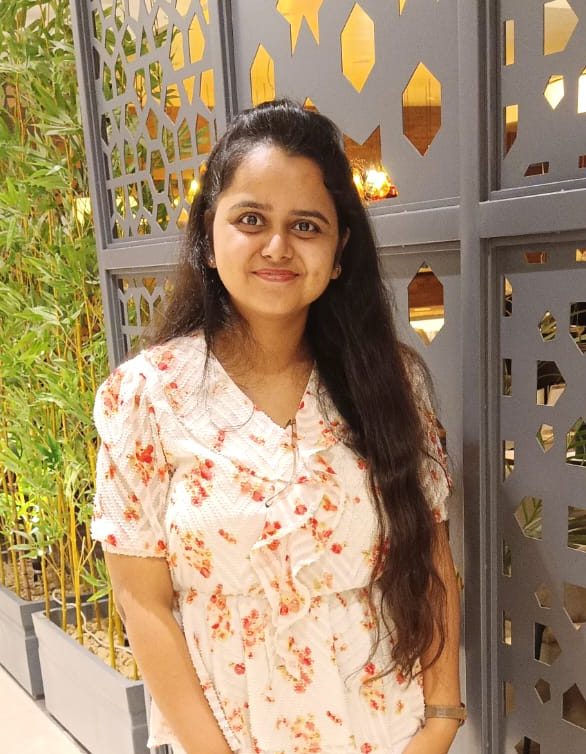
Muskan is a Marketing Analyst at Outgrow. She is working on multiple areas of marketing. On her days off though, she loves exploring new cafes, drinking coffee, and catching up with friends.

